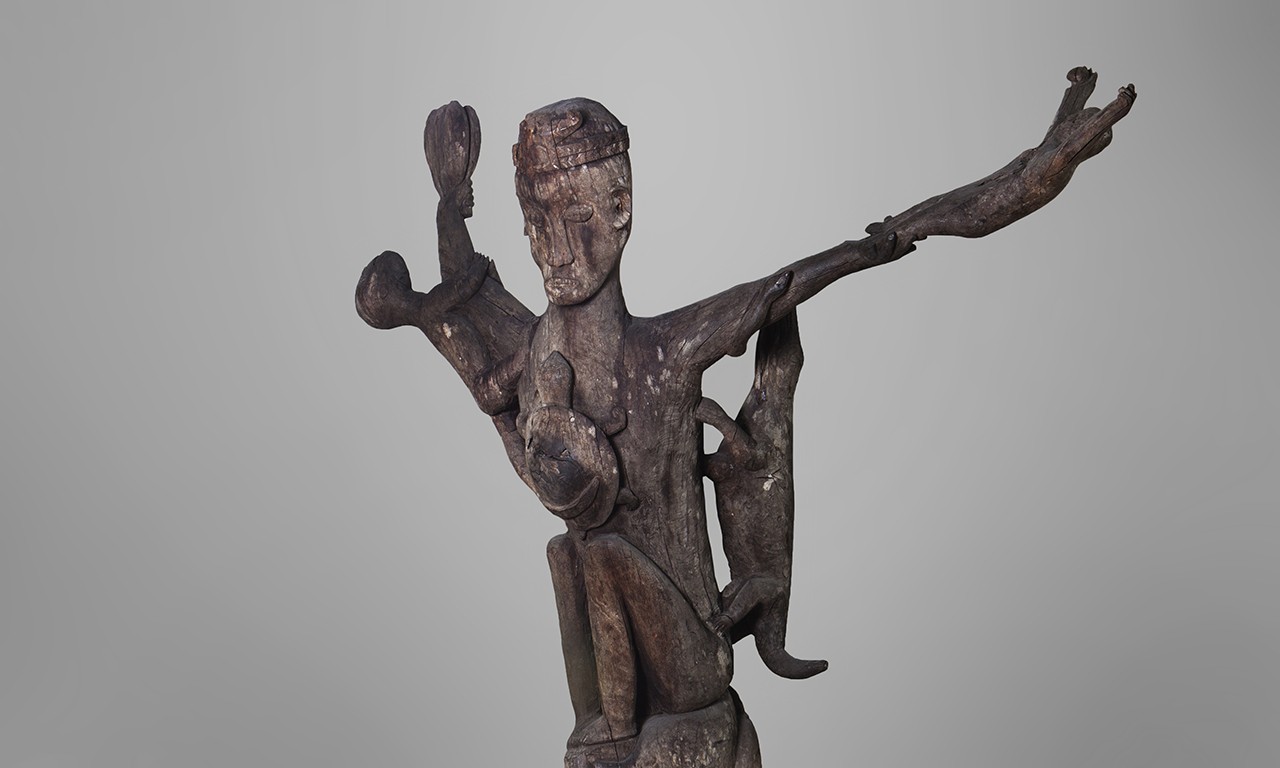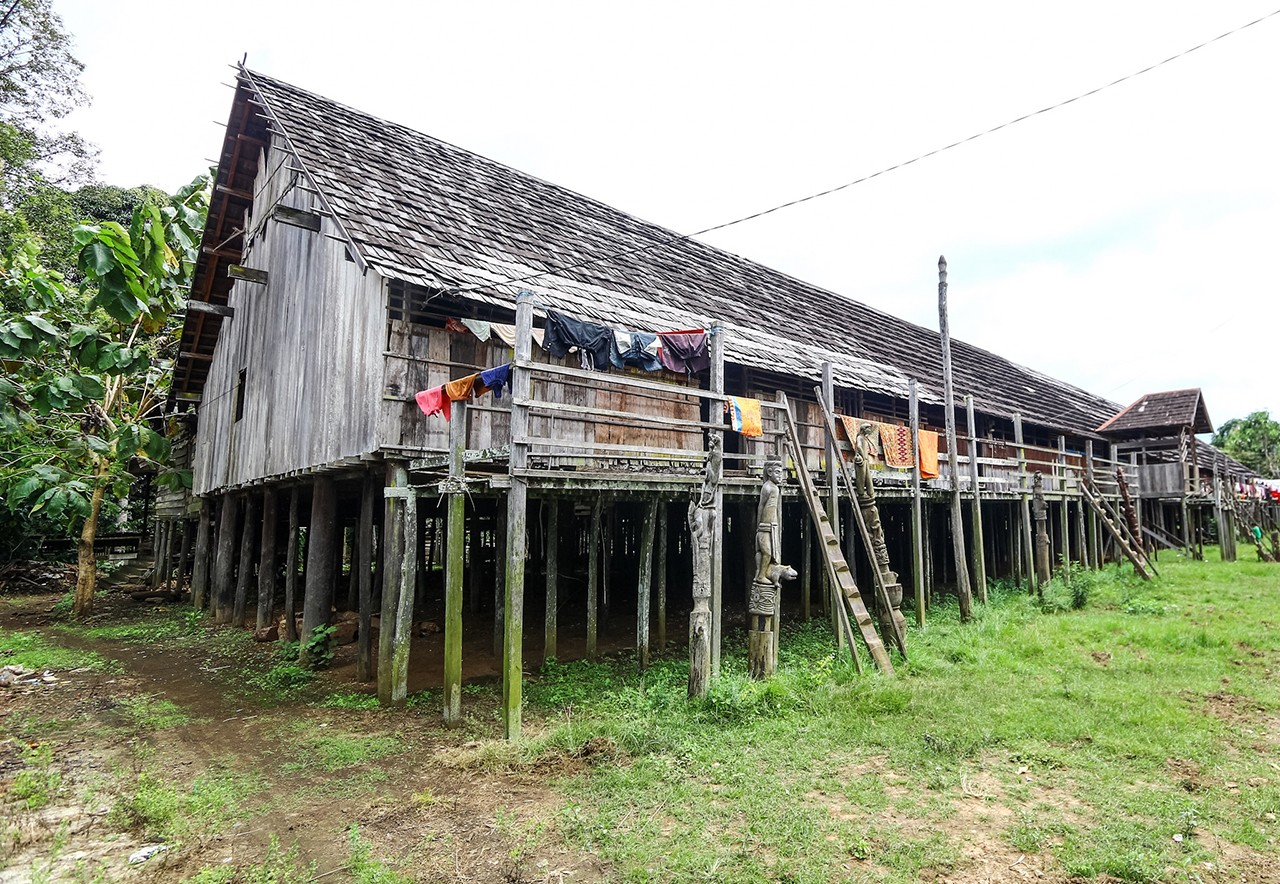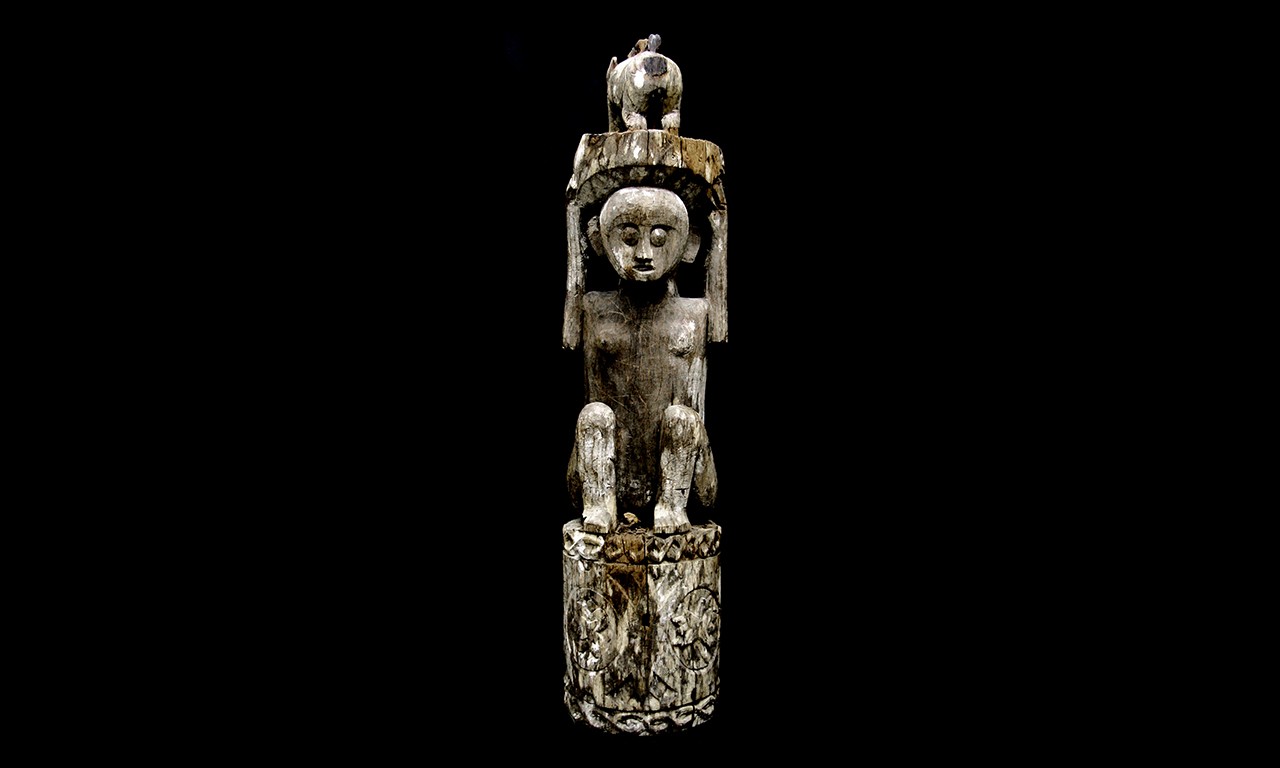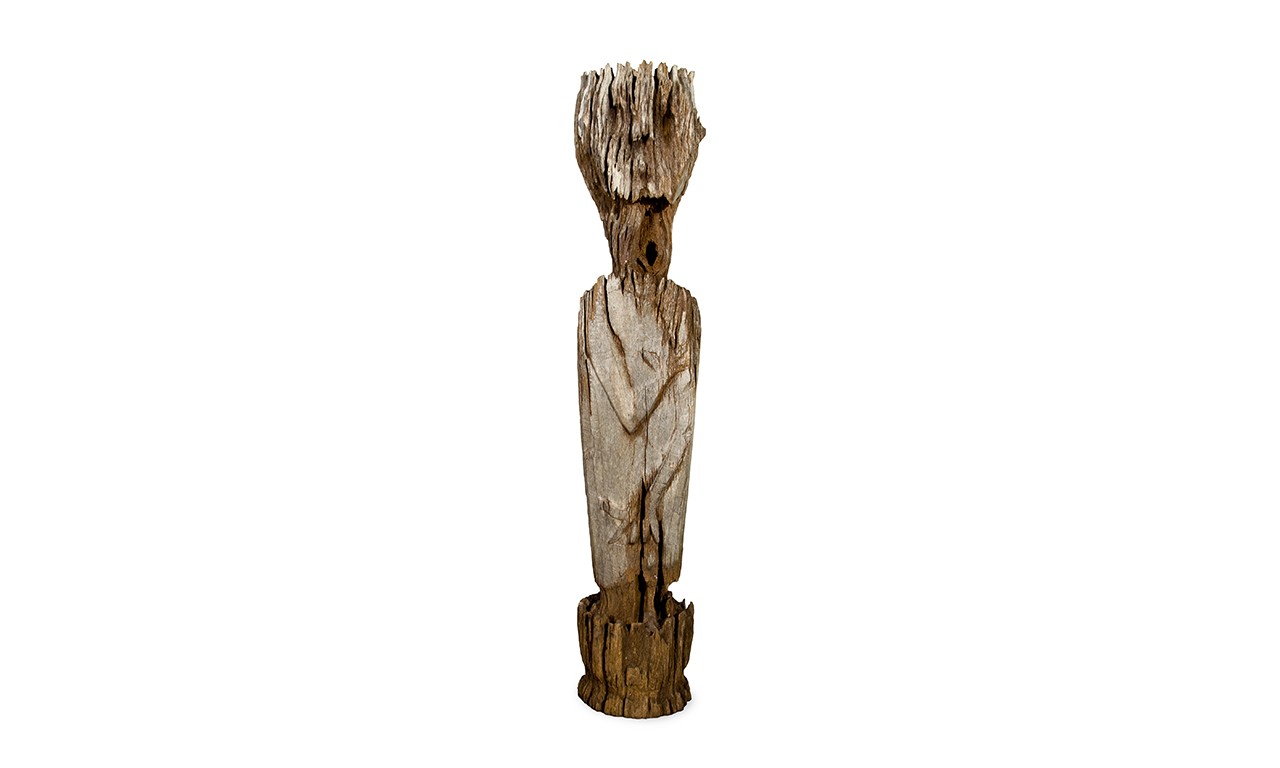 |
Guardian Sculpture (Hampatong), c. 1930
Ngaju or Benoa Dayak culture; Kalimantan Tengah (Central Kalimantan) Province, Borneo, Indonesia
Ironwood; 67 × 48 × 30 in.
2015.20.1
Gift of Mr. Mark Johnson |
Island Life
Borneo, the world’s third largest island, features a rich biodiversity and equally rich diversity of cultures. Of these, Dayak is an umbrella term that refers to some 200 ethnic groups living in the southern and central interior of Borneo. As of today there are about 4.6 million Indigenous inhabitants of Borneo who are considered members of this Austronesian supergroup. One of the key factors that has separated this group from the Malay, Chinese, Javanese, and other peoples living on the island is religious belief. Most Dayak are now either Roman Catholic or Muslim, but traditionally many Dayak were animistic with a key tenet of their belief being that humans have two souls: one which lingers with the body until it fully decomposes, and one which must make the arduous journey to the afterlife or ultimately succumb to becoming an evil spirit. This post looks at four hampatong in the Bowers collections, a type of figurative sculpture unique to the Dayak which serves as a resting place for this latter soul while it gathers its strength for its last journey.
 |
Dayak Long house Eheng, Melak
Image courtesy of Tiket2, licensed under CC BY 2.0 |
Location, Location, Hand Placement
In addition to being temporary repositories for the souls of the deceased, hampatong could fill several different roles depending on their motifs and where they were placed. Most of these sculptures were placed in fields or within villages. When surrounded by rice crops, hampatong were thought to enhance fertility and ensure bountiful harvests. Others were carved specifically for protection and placed throughout villages near doorways, outside of the longhouses characteristic of the Dayak, and along well-traveled paths. Hampatong topped poles and could all-told be up to nine feet in height. This offered them an ideal vantage point for protecting against evil spirits. All of the Bowers hampatong were cut from their posts so that they could be transported more easily. Figures that covered their heart, chest, and abdomen with their hands were often used to ward off both mental and physical ailments. This can be seen in a particularly weathered example further below.
To Carve Man
The construction of hampatong is an arduous process both physically and spiritually. They are carved in the round from single pieces of incredibly hardy Bornean ironwood (Eusideroxylon zwageri) with adzes. Usually, they will be created in the image of someone who has recently passed away. There are great stylistic differences amongst hampatong, but their forms tend to be more minimalistic and abstracted, especially when compared against the lifelike tau-tau made by the neighboring Sulawesi’s Toraja people. As a further departure, anthropomorphic hampatong often incorporate ferocious zoomorphic features such as long tongues, fangs, tusks, or horns to aid them in scaring away evil spirits. When figures do not have these features, they are instead often joined by one or two animal companions as can be seen in some of the examples in this post. The topmost hampatong in this post is something of an outlier as it features a water buffalo, a turtle, an unidentified crocodilian creature, a snake, two simian-like creatures, and a human baby that is either being held away from the onslaught of animals or swung with apparent abandon. This may be indicative of its later production.
 |
Guardian Sculpture (Hampatong), early 20th Century
Dayak culture; Borneo, Indonesia
Ironwood; 51 in.
2002.59.6
Gift of James Carona |
When is a Hampatong not a Hampatong?
The round bottom of the sculpture in the hampatong immediately above may represent a jar, an important indication of wealth which would have been imported from the coast through trade. A hampatong such as this would have been carved specifically for protection and placed throughout villages especially near doorways and along well-traveled paths. Its stance should also be noted, as funerary figures were commonly depicted in this pose throughout southeast Asia.
 |
Guardian Sculpture (Hampatong), c. 1900
Dayak culture; Kalimantan Barat (West Kalimantan) Province, Borneo, Indonesia
Ironwood; 45 x 9 3/4 in.
97.80.1
Anonymous Gift |
Water Damage
Over long periods of time, ironwood’s biggest weakness is water. Most of the wear seen in hampatong is evident in the following places: where water is likely to pool such as the flat head, shoulders, and base of the figure above; and where there are natural imperfections or knots in the wood. This kind of wear is very characteristic of surviving examples from the 18th and early 19th centuries, but carbon dating has shown that some extant hampatong date as far back as the 14th century. The most recent example in this post still features traces of pigment on it. Most of these sculptures would originally have been pigmented. In some cases they would have been dressed in clothing as well. Patches of white are not always indicative of pigment, however. The face of the feline hampatong is covered in dried lichen.
 |
Guardian Sculpture (Hampatong) or Sacrificial Pole, 18th to early 19th Century
Ngaju Dayak culture; Kalimantan Timur (East Kalimantan) Province, Borneo, Indonesia
Ironwood; 76 1/2 in.
2004.15.1
Gift of Bill Temple |
Feline Temperament
In some rare cases, humans are not the principal figures in hampatong and similar sculptures. This carving depicts a feline—perhaps the now-endangered Sumatran tiger—with a smaller anthropomorphic figure clasped on to the feline figure that appears to be suckling on her breast. According to one source, the Ngaju Dayak of southeast Borneo used similarly composed poles to tie slaves to before sacrificing them so that they could serve their masters in the afterlife.
Text and images may be under copyright. Please contact Collection Department for permission to use. Information subject to change upon further research.






Comments